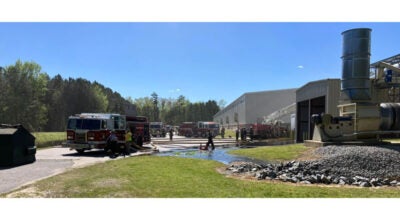You asked: VDOT official: Cracks serve as natural joints on Route 58
Published 11:11 am Saturday, October 13, 2012
Curious about something in Western Tidewater? Send your question to youasked@tidewaternews.com, and we’ll do our best to find the answer.
You asked: Why do I see cracks in the new concrete on Route 58?
BY ANDREW FAISON/CONTRIBUTING WRITER
andrew.faison@yahoo.com
COURTLAND—The cracks in the new concrete on Route 58 came as no surprise to the Virginia Department of Transportation.
“The cracks were expected due to the nature of the construction,” said Kris Purzycki, public information officer with VDOT in Suffolk.
Completed on Oct. 8, the five-mile, $7.8 million project stretched from Southampton High School in Courtland to east of Capron.
The 2.5-mile stretch beginning at the high school received four-inch “bonded” overlay, said Purzycki. This technique is used for surfaces that have minor deterioration but would benefit from reinforcement. The existing surface is patched, and a layer of concrete is placed on top.
“Unlike the other phases, the operation that took place didn’t necessitate deeper reconstruction, and is not ‘jointed’ like the other two (phases),” he said. “Cracks you see in the concrete are designed to serve as natural joints in the concrete. Because the concrete layer is bonded to the existing surface, the cracks found in the original layer come through.”
The 2.2-mile section that began ½-mile east of Capron, required the most extensive repairs. That portion was completely reconstructed, Purzycki said.
“The difference in appearance is due to the nature of the reconstruction, the structure of the phases requires that the concrete be ‘jointed’ after being applied,” he said. “This means that the pavement is scored into panels with waterproofing added to the seams.”
The process allows the plates to move somewhat independently of one another.
“These panels, connected and reinforced using a mesh skeleton, do require routine maintenance,” Purzycki added.





